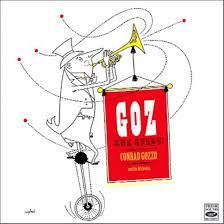
Daily Dose Of Jazz…
Conrad Joseph Gozzo was born in New Britain, Connecticut on February 6, 1922. His father played trumpet, and he began learning the instrument around the age of 5. He played in his junior and senior high school bands, but left school around the age of 16 at the recommendation of Isham Jones to join bandleader and clarinetist Tommy Reynolds in Boston, Massachusetts.
Quickly noted for his exceptional technical ability and style, Conrad played with Reynolds for nine months, then left to play with Red Norvo in 1939. Staying in the band for two years he went on to play with trumpeter Johnnie Davis, then performed and recorded with the Bob Chester Orchestra, and with Claude Thornhill’s band.
By 1942 he had a short stint with Benny Goodman before enlisting in the U.S. Navy, where clarinetist Artie Shaw had formed a band, the Rangers No. 501. Their first assignment was San Francisco, California and then Hawaii before touring in the South Pacific, the U.K. and the mainland States. After his discharge in 1945, Gozzo briefly rejoined Goodman along with fellow trumpet players from Shaw’s band.
By the Fifties Gozzo was sitting in the lead trumpeter chair on the Glen Gray, Stan Kenton, and Harry James “remakes”, and in Dan Terry’s 1954 Columbia sessions. He recorded extensively with arrangers Van Alexander, Nelson Riddle, Billy May, Ray Conniff, Jerry Fielding and Shorty Rogers, and also with performers Dean Martin and Frank Sinatra. He played first trumpet on all of the recordings of composer Henry Mancini.
He performed on many major live television shows broadcast on the NBC network, including the Dinah Shore Show, and performed on motion picture soundtracks including The Glenn Miller Story, The Benny Goodman Story, Bye Bye Birdie, Call Me Madam, Ben-Hur and Cleopatra. He played on the two-record set on Verve, Ella Fitzgerald Sings the Harold Arlen Songbook. In 1955, Gozzo released his own album, Goz the Great!, signed with RCA Victor and played by “Conrad Gozzo and his Orchestra”, directed by Billy May. Three of the twelve tracks were written together by Gozzo and May.
Conrad Gozzo, whose nicknames were Goz and Gopher because of his resemblence to the animal when playing, transitioned on October 8, 1964 from liver disease in Burbank, California. Jazz composer Sammy Nestico dedicated Portrait of a Trumpet to Gozzo.
More Posts: bandleader,history,instrumental,jazz,music,trumpet


